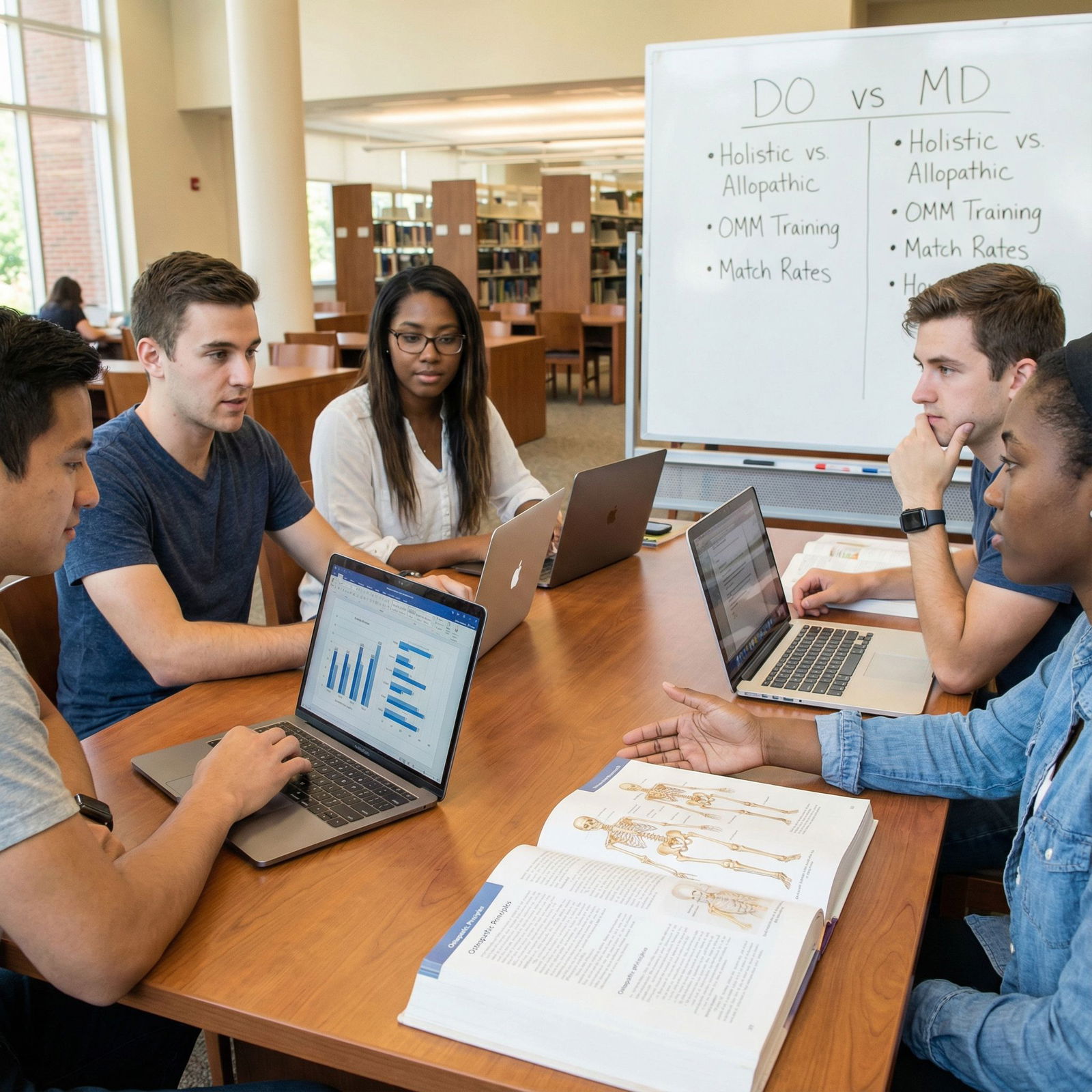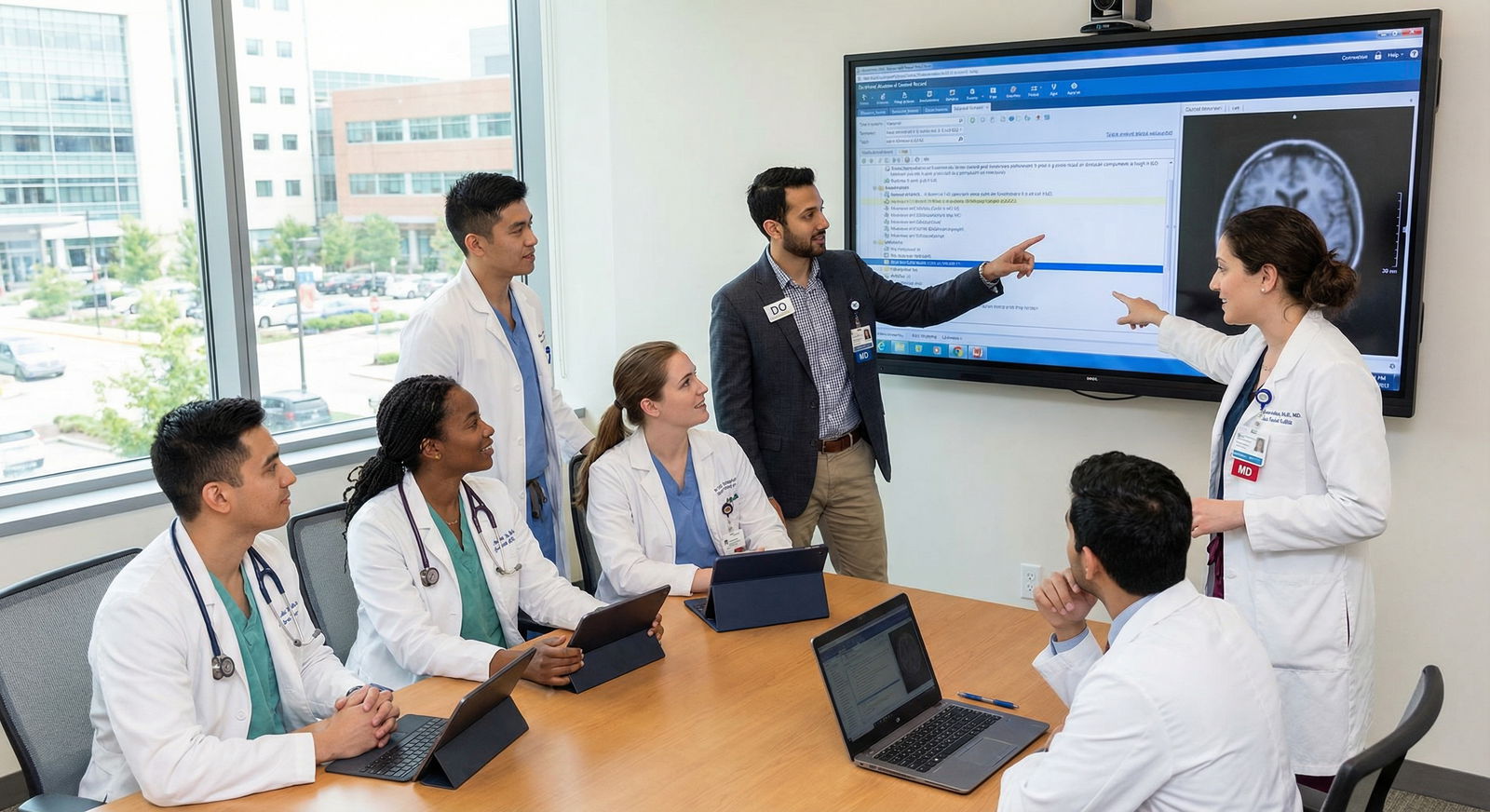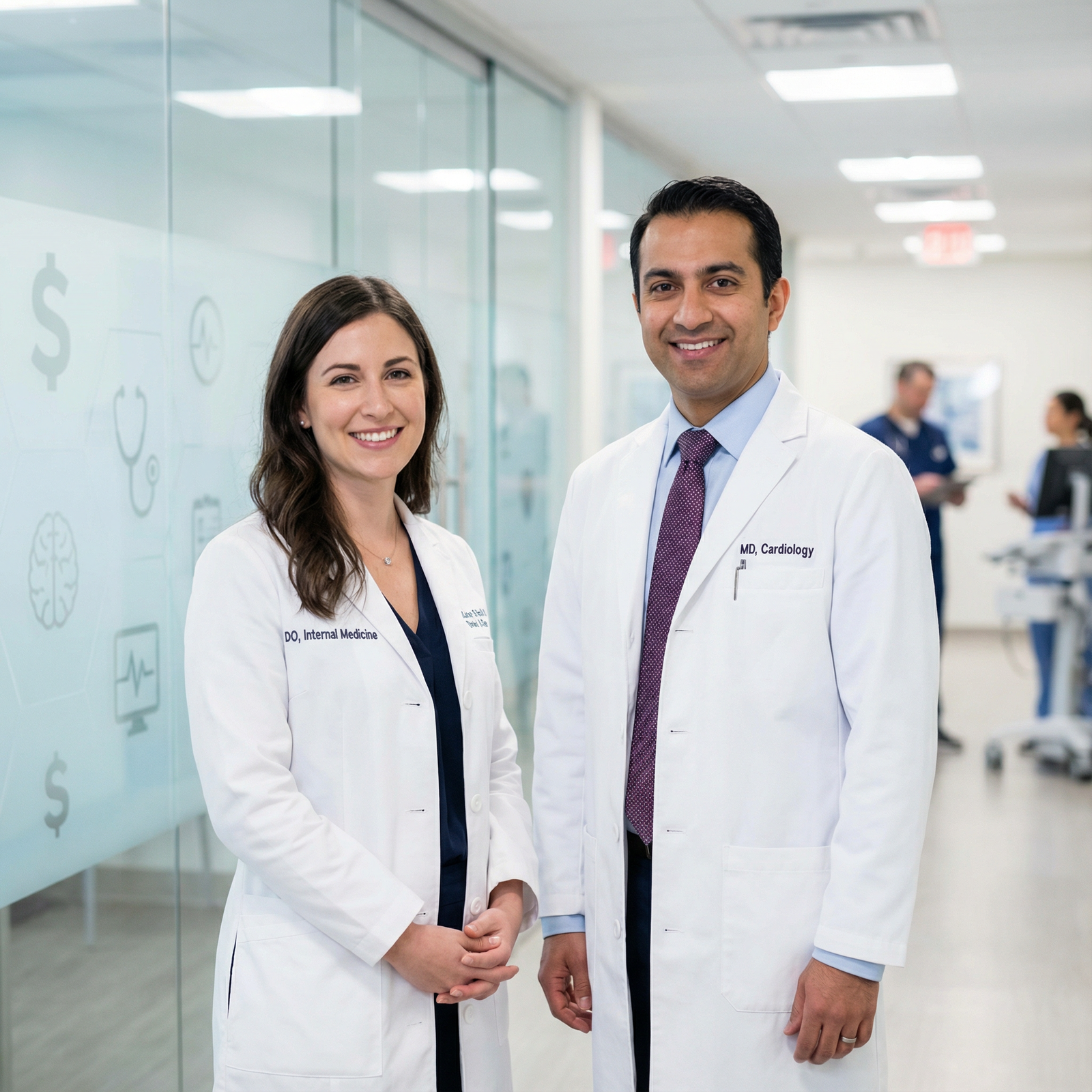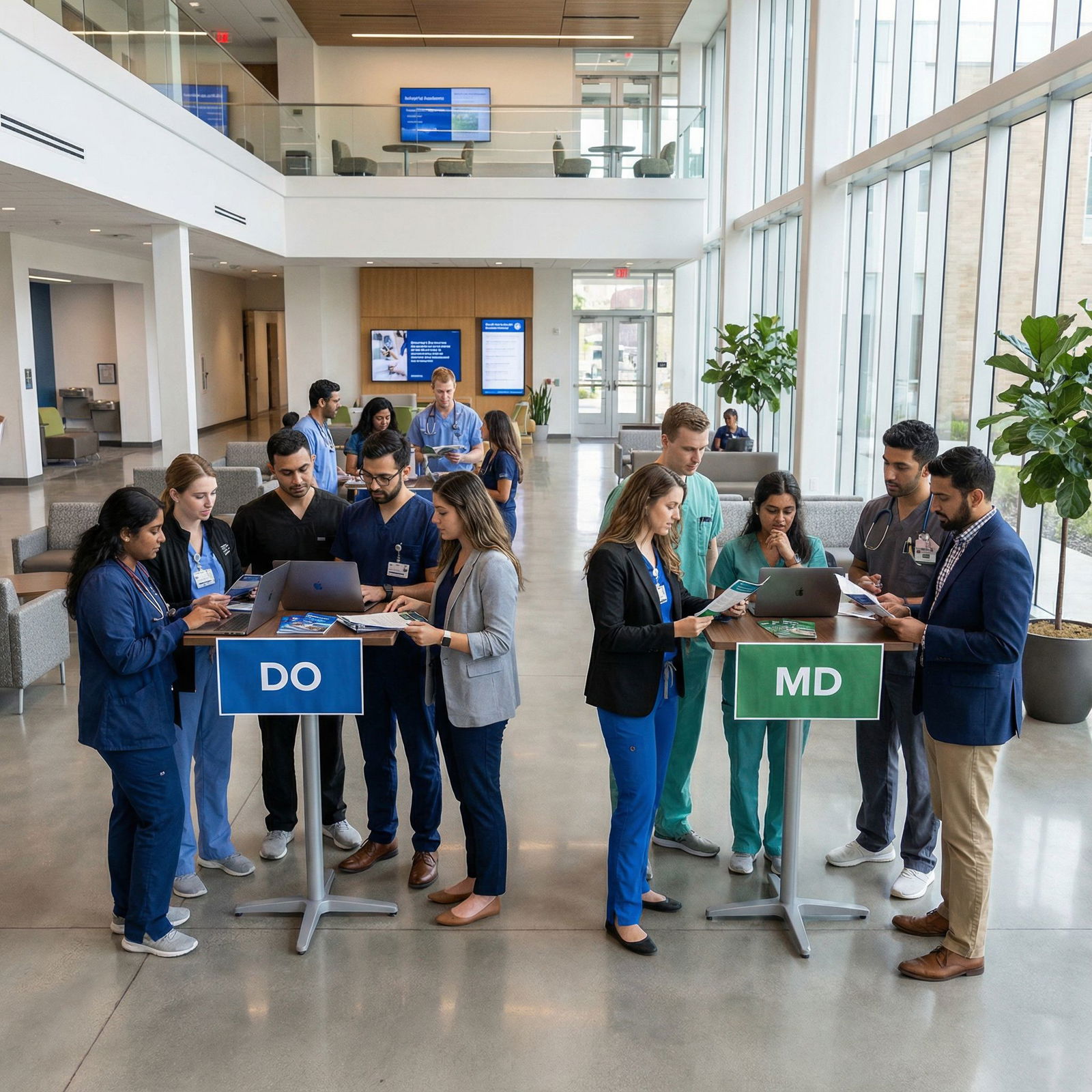Global Perspectives on DO vs MD: Understanding International Views

Introduction: Why Global Perception of DO vs MD Matters More Than Ever
For today’s premeds, medical students, and residents, the distinction between Doctor of Osteopathic Medicine (DO) vs Doctor of Medicine (MD) is no longer just a domestic question. As healthcare becomes increasingly global—through international electives, global health NGOs, telemedicine, and cross-border training—how each degree is viewed around the world has real implications for career planning.
Understanding global healthcare systems, credentialing norms, and cultural perceptions can help you:
- Make informed decisions about choosing DO vs MD
- Strategically plan international rotations or fellowships
- Anticipate licensing and visa challenges
- Communicate your training effectively to patients and colleagues abroad
This expanded guide explores how DOs and MDs are perceived internationally, examining historical roots, cultural differences, and emerging trends. You’ll also find practical advice if you are considering global opportunities as a DO or MD.
DO vs MD: Core Training, Philosophy, and Scope of Practice
Before examining global perceptions, it’s essential to clearly understand what distinguishes—and unites—these two pathways in medical training.
Shared Foundations in Modern Medical Training
In the United States, both DO and MD graduates:
- Complete a four-year accredited medical school program
- Take rigorous basic and clinical science coursework
- Complete clinical rotations in core specialties (internal medicine, surgery, pediatrics, OB/GYN, psychiatry, etc.)
- Enter ACGME-accredited residency programs and fellowships
- Are fully licensed physicians with prescribing rights and full scope of practice in all 50 states
From a practical standpoint, DOs and MDs function equivalently in U.S. clinical practice. The differences lie primarily in philosophy, some aspects of training, and how those distinctions are perceived domestically and abroad.
What Distinguishes DO Training?
Osteopathic medicine was founded in the late 19th century by Dr. Andrew Taylor Still. It emerged as a response to the sometimes harmful medical practices of the era, emphasizing the body’s inherent ability to heal.
Key features of DO training:
Holistic medicine emphasis
DO programs explicitly emphasize treating the whole person—mind, body, and spirit—rather than focusing solely on disease. This aligns well with contemporary trends in integrative and patient-centered care.Osteopathic Manipulative Treatment (OMT)
DO students receive 200–300+ additional hours of training in musculoskeletal anatomy and hands-on techniques to diagnose, treat, and prevent illness or injury. OMT can be used to:- Treat musculoskeletal pain
- Improve function and mobility
- Support recovery from illness or surgery
- Complement conventional treatments
Preventive and primary care focus (traditionally)
Historically, many DO schools emphasized primary care, rural medicine, and community health. While this is evolving and DOs now enter every specialty—including surgery, radiology, and competitive subspecialties—the philosophical roots remain prominent.
What Characterizes MD Training?
MD programs represent the traditional, allopathic pathway that has dominated global healthcare for over a century.
Core characteristics:
Allopathic approach
Focuses on diagnosing disease and treating it directly—primarily through pharmacologic, surgical, and technological interventions.Global familiarity
The MD degree is widely recognized around the world. In many countries, “MD” (or its local equivalent such as MBBS or MBChB) is synonymous with “physician.”Standardized perception abroad
Because MD training is similar in structure to many international medical degrees, credentialing bodies and employers are more familiar with evaluating MD qualifications.
Recognition in the U.S. vs Internationally
Within the U.S.:
DOs and MDs:- Hold identical practice rights
- Train side-by-side in residency and fellowship
- Compete for the same positions and leadership roles
Outside the U.S.:
Recognition can diverge:- MD degrees from accredited U.S. schools are generally easier to map to existing international standards.
- DO degrees from U.S. osteopathic schools are fully licensed in the U.S. but may be unfamiliar or misunderstood abroad, sometimes confused with non-physician “osteopaths.”
Understanding this distinction is critical for any DO considering global work.
Historical and Regional Perspectives on International Recognition
Global perception of DO vs MD is closely tied to how different regions historically developed their healthcare and licensing systems.

North America: The Stronghold of Osteopathic Medicine
United States
- Full equivalence
DOs and MDs are recognized as fully licensed physicians with identical practice rights. - Single graduate medical education system
Since the transition to a single ACGME-accredited residency system, DO and MD graduates train together. - Patient awareness is growing
While many patients previously did not know what “DO” meant, public understanding and appreciation for holistic and integrative approaches have increased.
Canada
- Recognized but not universally understood
Canada generally recognizes U.S.-trained DOs as physicians, but:- Licensing requirements vary by province.
- Some provincial colleges require additional documentation or assessment.
- Public and professional familiarity
Many healthcare professionals understand osteopathic medicine; the general public may be less familiar, especially outside metropolitan areas.
For both DOs and MDs, practicing in Canada typically involves provincial licensing exams and regulatory requirements.
Europe: Diverse Landscapes and Terminology Confusion
Europe presents the most complex picture for DO recognition due to terminology and historical development.
United Kingdom
- MD-equivalent physicians:
Conventional physicians typically hold MBBS/MBChB degrees, not “MD” at the undergraduate level. - Osteopath ≠ U.S. DO
In the UK, “osteopath” often refers to a non-physician manual therapist. This creates confusion:- U.S.-trained DOs are physicians.
- UK “osteopaths” are allied health professionals, not medical doctors.
- Practical impact
- Some U.S.-trained DOs have obtained recognition and practice rights after additional credential evaluation or training.
- Direct pathway is often more straightforward for MDs because their degree maps more cleanly to existing physician categories.
Continental Europe (e.g., Germany, France, Italy)
- Dominance of traditional medical degrees
Medical doctors usually hold national degree titles (e.g., Staatsexamen in Germany) rather than “MD.” - Limited awareness of U.S. osteopathic medicine
The “DO” title may:- Be unknown or misunderstood
- Be associated with manual therapists or chiropractors
- Path to practice
U.S.-trained MDs often face bureaucratic but conceptually straightforward recognition: their degree is “physician-like.” DOs may require more extensive clarification, documentation, or may be restricted to certain roles.
Asia-Pacific: Rapidly Evolving but Variable Acceptance
Australia and New Zealand
- Growing openness to holistic medicine
These countries have well-regulated health systems with:- Recognition of certain osteopathic practitioners (often non-physician manual therapists)
- Increasing awareness of integrative and holistic approaches
- U.S.-trained physicians
Both DO and MD graduates can sometimes obtain recognition, but:- Pathways may be more standardized for MDs.
- DOs may require additional explanation of their training or participation in specific recognized pathways.
- Regulatory nuance
Distinctions between a U.S. DO (physician) and local osteopaths (non-physician) must be carefully clarified.
Japan
- Western medicine dominance
Licensed physicians typically graduate from Japanese medical schools and hold traditional degrees. - Strong tradition of complementary medicine
Acupuncture, Kampo (traditional Japanese herbal medicine), and other modalities coexist with allopathic care. - Implications for DOs
While the concept of holistic medicine resonates, formal recognition of U.S.-trained DOs as physicians may be limited or require complex pathways. MD degrees fit more readily into existing structures.
Northern Europe: Alignment with Preventive and Patient-Centered Care
Finland and Nordic countries
- High value on patient-centered and preventive care
These countries’ health systems emphasize:- Preventive medicine
- Health promotion
- Strong primary care infrastructure
- Cultural alignment with osteopathic philosophy
The DO emphasis on holistic care and prevention aligns philosophically, even if the degree itself is less familiar. - Practical licensing
Regulatory frameworks may still favor conventional medical degrees. MDs generally navigate these systems more easily; DOs may need to pursue extra steps, assessments, or limited-scope roles.
Cultural Perceptions: Holistic Medicine, Trust, and Patient Choice
Beyond legal recognition, cultural perceptions shape how DOs and MDs are viewed in global healthcare.
Trust in Holistic vs Traditional Medical Models
Countries with strong holistic or integrative traditions
Nations that already embrace:- Traditional Chinese Medicine
- Ayurveda
- Herbal or indigenous healing practices
may be more open to the philosophical underpinnings of osteopathic medicine. Patients and policymakers used to holistic frameworks may see DOs as aligning with those values.
Countries with strong biomedical, hospital-based systems
In health systems that:- Value subspecialization
- Prioritize high-technology, hospital-based medicine
MDs (or equivalents) often dominate. In such systems, DOs may be perceived as “alternative” or “complementary,” even though U.S. DOs are fully trained physicians.
Public Education and Awareness
Public understanding of DO vs MD varies greatly:
- High-awareness environments (e.g., U.S.)
- Patients are increasingly informed about the DO degree.
- Many healthcare organizations promote DOs alongside MDs without distinction.
- Low-awareness environments
- The acronym “DO” may be unknown or misinterpreted.
- Some patients may assume DOs are non-physician manual therapists or alternative practitioners.
- MD remains the default mental image of a “doctor.”
For DOs planning international work, proactive communication about their training is crucial.
Patient Choice in Different Healthcare Systems
Systems with strong primary care gatekeeping
Patients usually see a general practitioner first, regardless of DO vs MD background. The physician’s interpersonal skills and clinical competence matter more than their degree label.Systems that allow direct specialist access
Brand recognition can play a bigger role. Patients may preferentially choose MDs if DOs are not well understood or if marketing and websites overwhelmingly feature MD titles.
Global Trends Reshaping DO and MD Perceptions
The lines between DO and MD pathways are gradually blurring in several key ways.
Rise of Integrative and Person-Centered Care
Worldwide, health systems are increasingly:
- Emphasizing prevention and lifestyle medicine
- Focusing on patient-reported outcomes and quality of life
- Recognizing the value of mind-body approaches
This benefits DO recognition because:
- Osteopathic philosophy naturally emphasizes whole-person care.
- OMT and manual medicine align with growing interest in non-pharmacologic pain management, especially in the context of the opioid crisis.
MDs are also increasingly adopting similar principles through:
- Integrative medicine fellowships
- Lifestyle medicine certifications
- Interprofessional primary care models
Standardization and Accreditation Initiatives
Several global forces are promoting more consistent recognition of medical degrees:
- World Federation for Medical Education (WFME) and global accreditation standards
- ECFMG 2024 and beyond: Aligning international medical graduate pathways with recognized accreditation systems
- Professional organizations (e.g., WONCA): Advocating for diverse primary care models and training backgrounds
These efforts can gradually help regulators better understand osteopathic medical training, especially when backed by robust documentation and outcome data.
Cross-Training and Interprofessional Learning
In both directions:
- Many MDs are:
- Learning basic manual medicine techniques
- Incorporating osteopathic principles into their practice
- DOs frequently:
- Train in ACGME-accredited programs dominated by MDs
- Adopt similar evidence-based, subspecialty-oriented practices
The result: day-to-day practice patterns of DOs and MDs often look similar, particularly in high-intensity specialties. The philosophical and historical differences remain, but in many settings the distinction is primarily on paper.
Practical Implications and Strategies for Aspiring Global Physicians
Whether you’re a premed deciding between DO vs MD or a current student/resident considering global health work, planning ahead can prevent career-limiting surprises.
If You’re a Premed Choosing Between DO and MD
Ask yourself:
How important is international mobility to you?
- If you definitely want to practice long-term in certain European or Asian countries, MD may offer more straightforward pathways at present.
- If your primary focus is the U.S. (with possible short-term global health trips, missions, or consulting), a DO can still be an excellent choice.
How strongly do you value a holistic, hands-on approach?
- If you are drawn to OMT, musculoskeletal medicine, and whole-person care, DO may align more closely with your interests.
- MD programs may still offer integrative experiences, but not with the same structured OMT curriculum.
What specialties are you considering?
- Both DOs and MDs now match into competitive specialties.
- For very niche international academic or subspecialty careers, research specific country and institution requirements early.
If You’re a DO or MD Planning International Work
For DOs, in particular:
Research target countries early
- Check medical council and licensing board websites.
- Look for specific statements on U.S.-trained DO physicians.
- Seek out alumni or mentors who have navigated the process.
Prepare robust documentation
- Detailed transcripts and curriculum descriptions
- Course hours and clinical rotation breakdowns
- Letters from deans or program directors clarifying equivalence to MD-level training
Consider short-term vs long-term roles
- Short-term global health trips often focus on practical skills and collaboration; degree labels may matter less.
- Long-term clinical practice, permanent migration, or academic appointments may require formal recognition of your degree.
For MDs:
- Leverage broader global familiarity
- Your degree will often be easier to map to local equivalents, but you’ll still need to navigate licensing, language, and exam requirements.
- Highlight holistic and communication skills
- Even as an MD, emphasizing patient-centered and culturally sensitive care aligns with global trends and can distinguish you as a clinician.
Case Snapshots: How DOs and MDs Experience Global Practice
Australia: Integrating Diverse Approaches
In Australia:
- Osteopathic practitioners are regulated, but most are non-physician manual therapists.
- U.S.-trained MDs often find clearer pathways to physician recognition.
- Some U.S.-trained DOs have successfully:
- Gained recognition as medical practitioners
- Clarified their training to regulators and employers
- Contributed significantly to musculoskeletal and primary care practice
Japan: Traditional Medicine Meets Western Biomedicine
In Japan:
- MD-equivalent physicians dominate hospitals and clinics.
- Traditional modalities (acupuncture, Kampo) remain part of patient choices, especially for chronic conditions.
- DOs interested in Japan may:
- Engage primarily in research, education, or non-licensure roles
- Collaborate with local physicians to introduce osteopathic principles within existing frameworks
Finland: Alignment with Preventive and Patient-Centered Care
In Finland:
- Strong emphasis on prevention and system-level efficiency.
- Patients value continuity, communication, and trust—areas where DO training in holistic care can shine.
- For DOs, success may depend on:
- Navigating national licensing requirements
- Demonstrating the equivalence of their training to physician standards
- Highlighting preventive care and musculoskeletal expertise

FAQs: DO vs MD in Global Healthcare
1. Are U.S.-trained DOs recognized as physicians outside the United States?
Recognition varies significantly by country:
- Some countries treat U.S.-trained DOs as fully qualified physicians, often after credential evaluation and exams (similar to MDs).
- Others:
- Do not yet have a clear category for U.S. DOs
- Confuse U.S. DOs with local non-physician osteopaths
- Require additional training or restrict practice
- Always verify with the national medical council or licensing authority in your target country before committing to long-term plans.
2. Do MDs and DOs take the same licensing exams?
In the United States:
- MDs typically take the USMLE Step 1–3 exams.
- DOs take the COMLEX-USA Level 1–3 exams and may also choose to take the USMLE series to maximize residency options or facilitate certain international pathways.
- For international practice, many countries have their own licensing exams (e.g., PLAB in the UK, AMC exams in Australia), which both MDs and DOs may be required to take.
3. Why might a patient choose a DO over an MD—or vice versa?
Patients might choose a DO if they:
- Prefer a holistic, whole-person approach to care
- Are interested in non-pharmacologic management of pain or musculoskeletal issues through OMT
- Appreciate more time spent on lifestyle, prevention, and functional health
Patients might choose an MD if they:
- Are more familiar with the MD title culturally
- Prioritize rapid access to subspecialized or procedural care
- Live in systems where MD is the standard or only recognized physician degree
In reality, most patients base their choice on individual physician reputation, communication style, and recommendations, not just the letters after the name.
4. How do patients and other healthcare professionals typically perceive the difference between DOs and MDs?
Perceptions depend heavily on setting:
- In the U.S.:
- Many patients see DOs and MDs as equivalent.
- Some healthcare professionals may have historical biases favoring MDs, but this is declining as DO representation grows in academic medicine and competitive specialties.
- Internationally:
- MD is widely understood as “physician.”
- DO may be unfamiliar or conflated with non-physician osteopaths, requiring explanation.
For both degrees, professional competence, communication, and clinical outcomes shape long-term perception more than the specific letters.
5. How is the global acceptance of DOs changing, and what should future DOs do to prepare?
Global acceptance of U.S.-trained DOs is slowly expanding due to:
- Increasing international collaboration in medical education
- Greater emphasis on holistic and integrative care
- Growing numbers of DO graduates in academic and leadership roles
Future DOs who are interested in global health should:
- Research target countries early (ideally before or during medical school)
- Keep detailed records of their training and competencies
- Consider taking USMLE exams in addition to COMLEX for added flexibility
- Seek mentors who have successfully built international or global health careers as DOs
- Be prepared to clearly explain their training and scope of practice to peers, regulators, and patients
Understanding how DOs and MDs are viewed internationally is a strategic advantage for anyone entering medicine today. Whether you ultimately choose the DO or MD pathway, aligning your training with your long-term goals—in global healthcare, holistic medicine, or highly specialized practice—will position you to make the greatest impact on patients’ lives around the world.

SmartPick - Residency Selection Made Smarter
Take the guesswork out of residency applications with data-driven precision.
Finding the right residency programs is challenging, but SmartPick makes it effortless. Our AI-driven algorithm analyzes your profile, scores, and preferences to curate the best programs for you. No more wasted applications—get a personalized, optimized list that maximizes your chances of matching. Make every choice count with SmartPick!
* 100% free to try. No credit card or account creation required.












